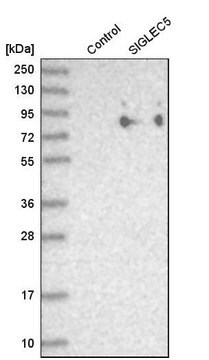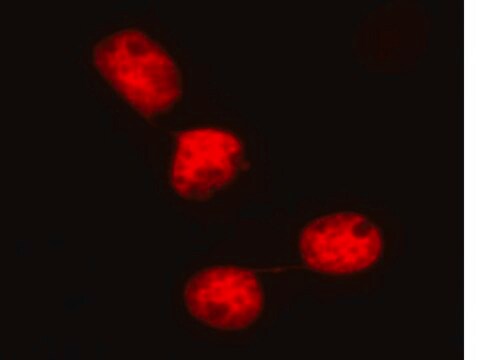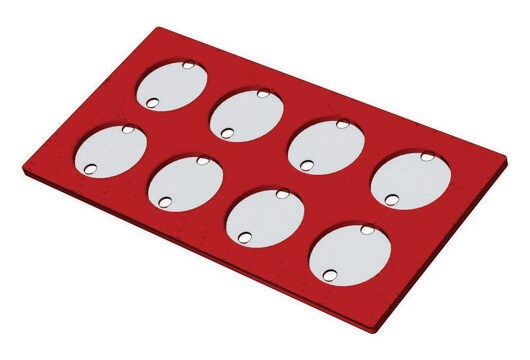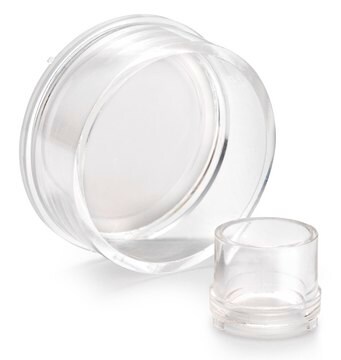MABF2045
Przeciwciało anty-Siglec-H, klon 551
clone 551, from rat
Synonim(y):
Sialic acid binding Ig-like lectin H, Siglech
About This Item
Polecane produkty
pochodzenie biologiczne
rat
forma przeciwciała
purified immunoglobulin
rodzaj przeciwciała
primary antibodies
klon
551, monoclonal
reaktywność gatunkowa
mouse
opakowanie
antibody small pack of 25 μg
metody
flow cytometry: suitable
immunohistochemistry: suitable
izotyp
IgG1κ
numer dostępu NCBI
numer dostępu UniProt
docelowa modyfikacja potranslacyjna
unmodified
informacje o genach
mouse ... Siglech(233274)
Opis ogólny
Specyficzność
Immunogen
Zastosowanie
Analiza cytometrii przepływowej: Reprezentatywna partia wykryła Siglec-H w zastosowaniach cytometrii przepływowej (Yun, T.J., et. al. (2016). Cell Metab. 23(5):852-66).
Inflammation & Immunology
Jakość
Immunohistochemistry Analysis: A 1:25 dilution of this antibody detected Siglec-H in frozen mouse spleen tissue sections.
Opis wartości docelowych
Postać fizyczna
Przechowywanie i stabilność
Inne uwagi
Oświadczenie o zrzeczeniu się odpowiedzialności
Nie możesz znaleźć właściwego produktu?
Wypróbuj nasz Narzędzie selektora produktów.
Kod klasy składowania
12 - Non Combustible Liquids
Klasa zagrożenia wodnego (WGK)
WGK 1
Temperatura zapłonu (°F)
Not applicable
Temperatura zapłonu (°C)
Not applicable
Certyfikaty analizy (CoA)
Poszukaj Certyfikaty analizy (CoA), wpisując numer partii/serii produktów. Numery serii i partii można znaleźć na etykiecie produktu po słowach „seria” lub „partia”.
Masz już ten produkt?
Dokumenty związane z niedawno zakupionymi produktami zostały zamieszczone w Bibliotece dokumentów.
Nasz zespół naukowców ma doświadczenie we wszystkich obszarach badań, w tym w naukach przyrodniczych, materiałoznawstwie, syntezie chemicznej, chromatografii, analityce i wielu innych dziedzinach.
Skontaktuj się z zespołem ds. pomocy technicznej








